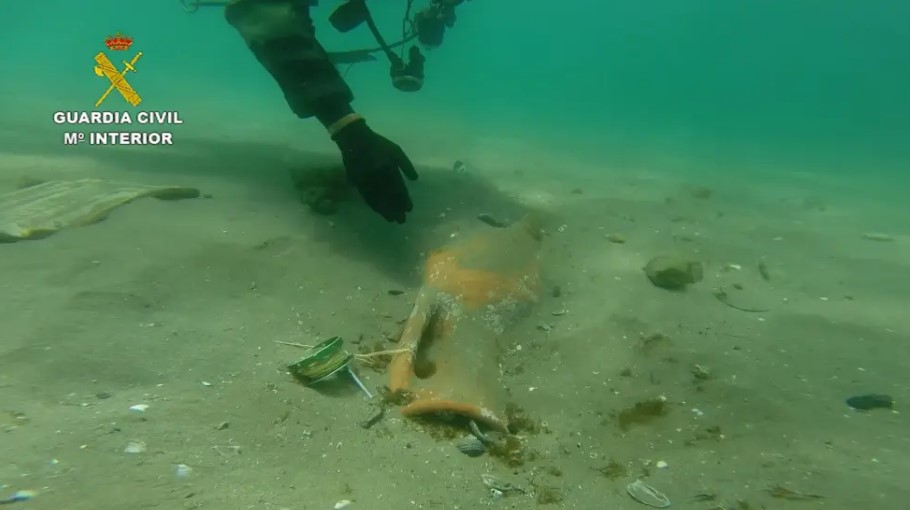
Image of Guardia Civil GEAS divers locating the amphorae in Cadiz.
Credit: Guardia Civil GEAS
Two amphorae dating back to the 1st and 2nd centuries have been discovered at a beach in Puente Mayorga, in the Cadiz municipality of San Roque.
An operation involving officers from the Guardia Civil’s Group of Specialists in Underwater Activities (GEAS) of the Algeciras Command collaborated with members of the Centre for Underwater Archeology (CAS) to retrieve the pieces. They were subsequently transferred to the Museum of Cádiz.
A diver alerted the police to the sighting of a large amphora
As reported by the force, the operation was initiated after a Guardia Civil patrol in the San Roque area was summoned by a diver.
He informed them that he had seen a large amphora half-buried some eight metres from the shore, on the beach of Puente Mayorga.
Guardia Civil specialists visited the beach and began a search in the area indicated by the diver, finally finding two half-buried amphorae.
They were found in shallow water with good visibility
These two ancient objects were found in an area of shallow water close to the coast, with good visibility, with the GEAS Group informing the Andalucian Council of Tourism, Culture and Sports of their find.
The Andalucian Institute of Historical Heritage subsequently carried out an assessment of the area. In a joint action with the GEAS, they planned a quick extraction to avoid possible plundering of the site.
The pieces underwent stabilisation treatment
Once extracted from their location the pieces were deposited in the CAS workshops where they were subjected to stabilisation treatment before their definitive transfer to the Museum of Cádiz.
The finding corresponds to two incomplete amphorae, from Roman times. One is of the ‘Puerto Real I’ type, thought to date back to between the second half of the 2nd century AD and the first years of the 3rd century AD.
Out of archaeological context, these are two isolated pieces whose secondary position – the location in which they were found and the state of the fractures they presented – suggested that they had been moved from another area for possible extraction.
Stay connected with us on social media platform for instant update click here to join our Twitter, & Facebook
We are now on Telegram. Click here to join our channel (@TechiUpdate) and stay updated with the latest Technology headlines.
For all the latest World News Click Here
